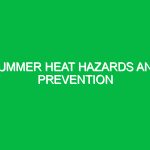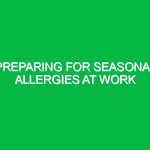As the winter months approach, the chill in the air signals not just the beauty of the season but also a series of hazards that can impact health, safety, and the environment. Winter weather safety tips are crucial for individuals and organizations alike. These guidelines aim to prepare everyone for the challenges posed by icy roads, snow accumulation, and extreme cold temperatures. Understanding the risks associated with winter weather can help prevent accidents, injuries, and health issues, making it an essential focus within the Health, Safety, and Environment (HSE) domain.
Understanding Winter Weather Hazards
Winter brings with it a variety of weather conditions that can pose serious risks. Ice, snow, and freezing temperatures can lead to numerous hazards, including:
1. Slips and Falls
One of the most common winter hazards is slipping on ice or snow-covered surfaces. According to the National Safety Council, falls account for a significant number of workplace injuries during the winter months. For example, a personal anecdote comes from a colleague who slipped on an icy sidewalk while walking to their car last winter. They suffered a sprained wrist, a reminder of how dangerous seemingly minor conditions can be.
2. Vehicle Accidents
Driving in winter conditions can be treacherous. Snow and ice can reduce visibility and traction, leading to accidents. The Insurance Institute for Highway Safety reports that winter weather contributes to thousands of vehicle crashes annually. A key factor is inadequate preparation; many drivers fail to equip their vehicles with winter tires or emergency kits, exacerbating the risks.
3. Cold-Related Illnesses
Hypothermia and frostbite are significant concerns during winter months. These conditions occur when the body loses heat faster than it can produce it. Individuals working outdoors or engaging in winter sports are especially vulnerable. A family friend once experienced frostbite during a snowboarding trip, which underscored the importance of dressing appropriately for cold weather.
4. Carbon Monoxide Poisoning
As people turn to heating devices to combat the cold, the risk of carbon monoxide poisoning increases. Portable generators, space heaters, and even vehicles left running in enclosed spaces can produce this odorless, colorless gas, which can be deadly. This risk is particularly prevalent during power outages or when using alternative heating methods without proper ventilation.
5. Stress and Fatigue
Winter can also bring about fatigue and stress, particularly for those who must deal with snow removal or travel in hazardous conditions. The physical demands of shoveling snow can lead to overexertion and heart problems, especially in older adults. A case study of a local construction worker who suffered a heart attack while shoveling snow highlights the often-overlooked health risks associated with winter weather.
Safety Precautions and Best Practices
To mitigate these risks, it’s essential to implement effective safety precautions. Here are some actionable winter weather safety tips:
1. Preventing Slips and Falls
To reduce the likelihood of slips and falls, consider the following measures:
- Wear appropriate footwear: Use shoes or boots with non-slip soles to improve traction on icy surfaces.
- Use salt or sand: When responsible for maintaining walkways, apply salt or sand to improve grip on slippery areas.
- Observe surroundings: Always be vigilant about your environment; watch for ice patches and uneven surfaces.
2. Safe Driving Practices
For safer travel during winter, follow these tips:
- Prepare your vehicle: Ensure your car is equipped with winter tires, an emergency kit, and a full tank of gas.
- Adjust your driving: Slow down and increase the distance between you and the car ahead, as stopping distances are longer on icy roads.
- Stay informed: Check weather forecasts and road conditions before you travel.
3. Dressing for the Cold
To protect against cold-related illnesses:
- Layer clothing: Wear multiple layers of clothing to trap heat, starting with moisture-wicking base layers, insulating materials, and waterproof outer layers.
- Cover extremities: Wear hats, gloves, and scarves, as most heat is lost through the head and extremities.
- Take breaks: If working outdoors, take regular breaks in a warm environment to prevent hypothermia.
4. Preventing Carbon Monoxide Poisoning
To avoid carbon monoxide poisoning, adhere to these precautions:
- Install detectors: Place carbon monoxide detectors in your home, especially near sleeping areas.
- Ventilate: Ensure that any space heaters or generators are used outdoors and well-ventilated.
- Educate yourself: Know the symptoms of carbon monoxide poisoning, which include headache, dizziness, and nausea.
5. Managing Stress and Fatigue
To manage the physical and mental stress that winter can bring:
- Take it easy: Don’t overexert yourself when shoveling snow; take breaks and ask for help if needed.
- Stay active: Engage in regular physical activity indoors to maintain circulation and reduce stress.
- Seek support: If feeling overwhelmed, talk to friends, family, or a professional who can help.
Regulations and Standards
In addition to personal precautions, there are regulations and standards in place to enhance winter weather safety. Organizations like OSHA (Occupational Safety and Health Administration) provide guidelines for employers to ensure safe work environments during winter months. For instance, OSHA mandates that employers must take necessary precautions to protect employees from slipping hazards and ensure that appropriate safety measures are in place for outdoor work in cold conditions.
Moreover, the National Weather Service plays a critical role by issuing winter weather advisories, watches, and warnings to alert the public about impending severe weather. Adhering to these alerts can be vital in preventing injuries and fatalities associated with winter storms.
Conclusion
Winter weather safety tips are essential for navigating the season’s challenges effectively. By understanding the potential hazards, implementing safety precautions, and adhering to regulations, individuals and organizations can significantly reduce risks. As the winter months approach, take the time to prepare yourself, your family, and your workplace for the icy conditions ahead. Remember, safety starts with awareness and preparedness, ensuring that everyone can enjoy the beauty of winter while minimizing risks to health and safety.


